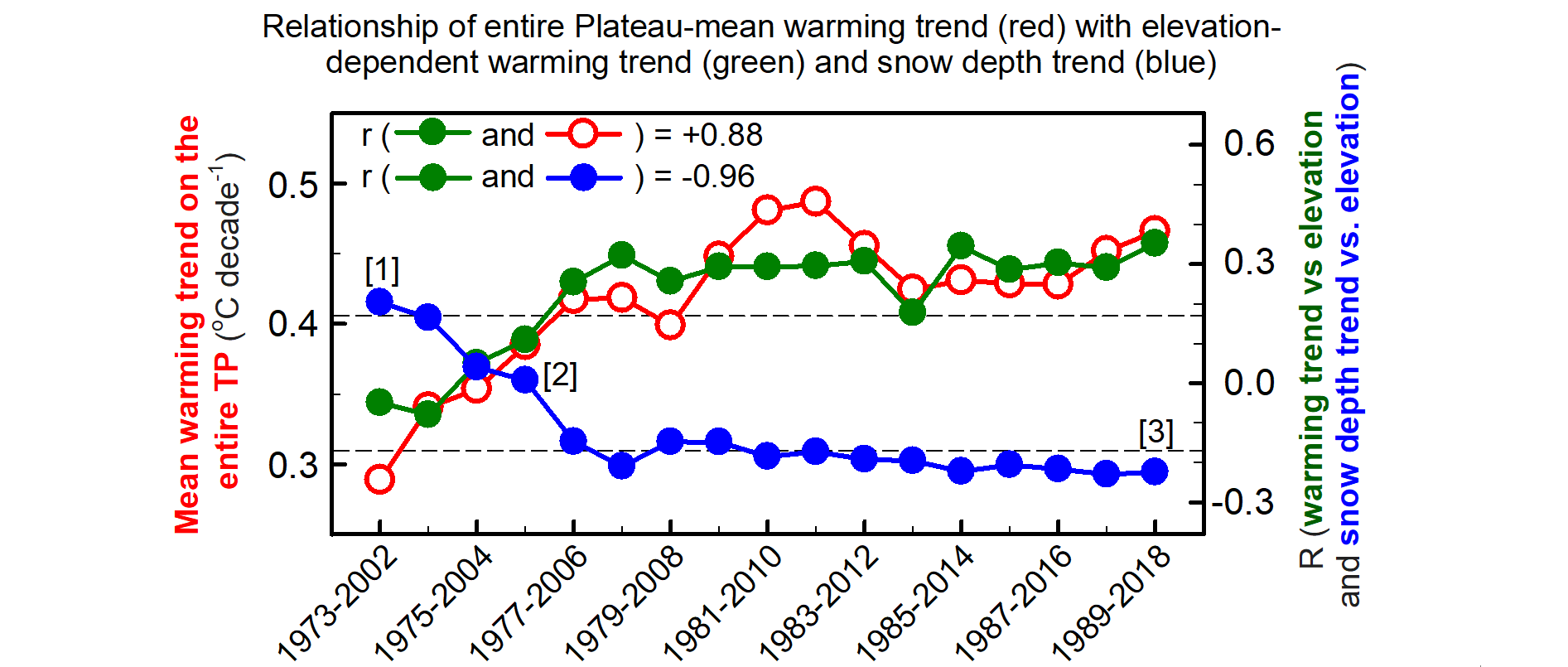联系我们
竺可桢-南森国际研究中心
邮 箱:nzc_iap@mail.iap.ac.cn
邮 编:100029
地 址:北京市朝阳区德胜门外祁家豁子华严里40号 竺南中心

科研进展
Research Progress青藏高原雪深变化主导其变暖海拔依赖性的演化模态
Local changes in snow depth dominate the evolving pattern of elevation-dependent warming on the Tibetan Plateau
[2021-06-05]
【中文介绍】
气候变暖海拔依赖性指海拔越高,变暖越快的现象,其可能会加速青藏高原高海拔区积雪、冰川等的消融,从而严重影响周边地区水资源的可持续供给。目前对青藏高原变暖的海拔依赖性是否存在及其驱动过程,缺乏系统性认识,部分研究存在争议。
利用1973–2018年期间30年滑动窗口所得17个时期的133个台站气温观测资料,本研究首次揭示了青藏高原变暖的海拔依赖性会随时间推移发生变化:在早期区域变暖较弱时,不同海拔雪深变化有限,不存在变暖的海拔依赖性;但随着时间推移,区域变暖加剧,高海拔雪深显著减少,导致变暖的海拔依赖性开始形成并越来越明显。这表明区域变暖加剧可通过减少高海拔区雪深,控制青藏高原变暖海拔依赖性的演化模态。
这解释了前人针对不同时期研究所得结果的分歧,并预示未来更暖背景下青藏高原变暖的海拔依赖性可能加强。这一结论对评估青藏高原固态水资源长期可持续性具有重要意义。相关论文发表在《Science Bulletin》期刊。
【英文介绍】
Climate change is having disproportionate impacts on the Tibetan plateau. Elevation-dependent- warming (EDW), faster warming in high mountains, poses an enhanced threat to life-supporting snow/ice reserves above 5000 m. Past studies debate how EDW is caused, and cannot predict how it will change in future. This study, for the first time, shows that the amplitude of regional warming determines the pattern of EDW, and that changing elevation gradients in snow depth over time have been responsible. Snow loss at increasingly higher elevations moves the zone of enhanced impact uphill, probably continuing in future. Our results explain the divergence in previous studies about causes of EDW, and also have critical implications for longer-term sustainability of water resources on the Tibetan Plateau.
【关键图表】

【引用格式】
Guo Donglin, Pepin Nick, Yang Kun, Sun Jianqi, Li Duo, 2021: Local changes in snow depth dominate the evolving pattern of elevation-dependent warming on the Tibetan Plateau. Science Bulletin, 66, 1146–1150.